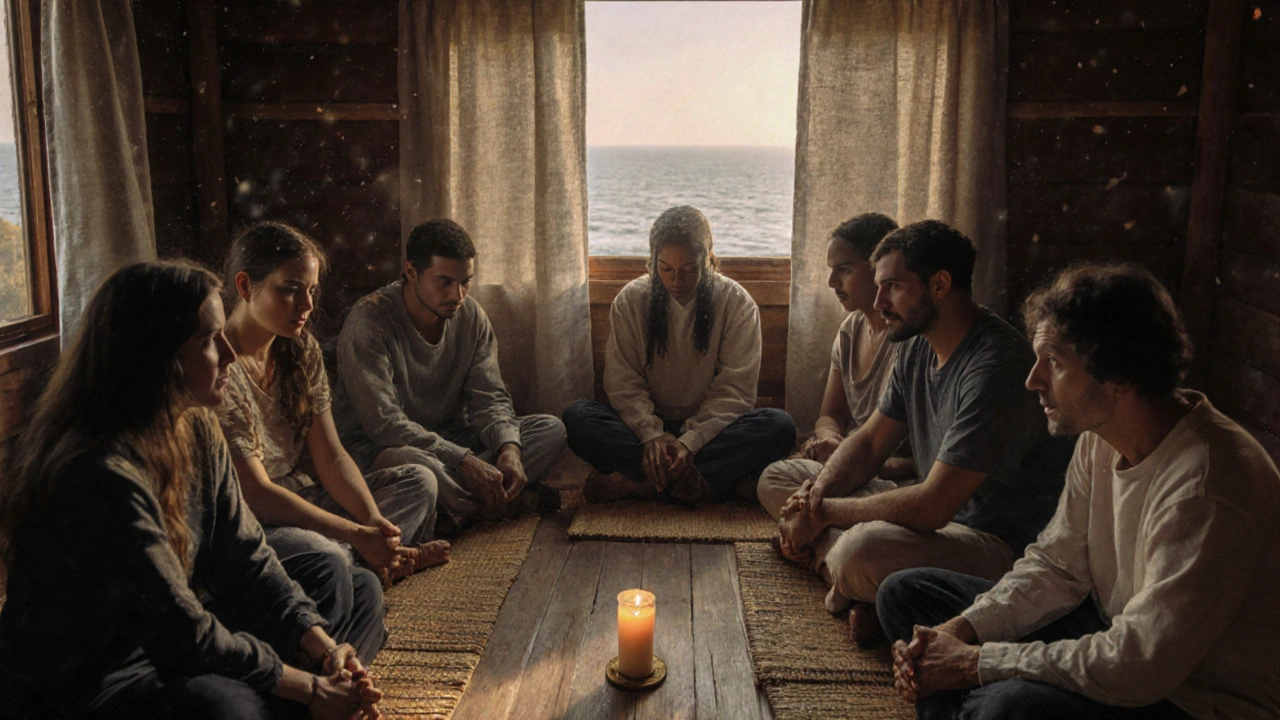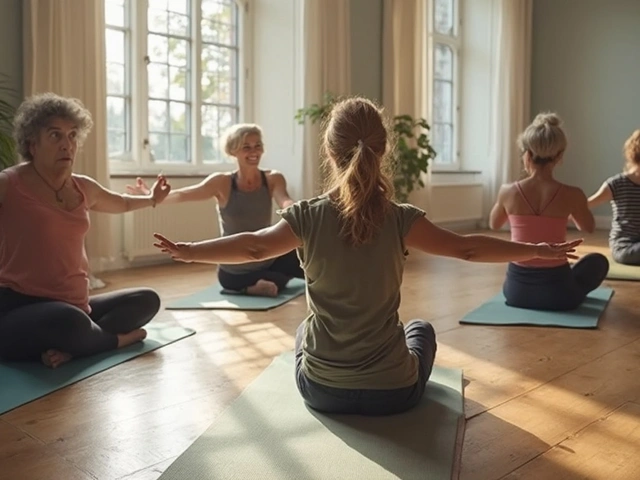Esalen: Embrace the Journey of Self-Discovery and Transformation

On a rocky cliff overlooking the Pacific in Big Sur, California, something quiet but powerful has been happening since 1962. It’s not a retreat center. Not a spa. Not even really a school. It’s Esalen-a place where people come broken, confused, or just tired of the noise, and leave changed in ways they can’t explain. If you’ve ever felt like you’re living someone else’s life, Esalen doesn’t give you answers. It gives you space to find your own.
What Esalen Really Is
Esalen Institute isn’t a luxury resort with yoga classes and organic smoothies, though it has those. It’s a living experiment in human potential. Founded by Michael Murphy and Dick Price, two Stanford grads tired of the rigid, academic approach to psychology, Esalen became a laboratory for ideas that were too wild for universities: gestalt therapy, encounter groups, meditation, bodywork, and the idea that healing isn’t just fixing what’s broken-it’s awakening what’s been buried.
Think of it as the birthplace of the human potential movement. Carl Rogers, Abraham Maslow, Alan Watts, and Fritz Perls all taught there. People didn’t just attend workshops-they lived them. They screamed in encounter groups. They rolled in warm baths filled with Epsom salts and sea water. They sat in silence for hours, watching the ocean roll in. No phones. No schedules. Just presence.
Today, Esalen still operates on those same principles. It’s not about checking boxes. It’s about dropping the mask. The workshops aren’t branded. There’s no certification. No Instagrammable moments. Just raw, messy, beautiful human connection.
The Core Practices That Change People
What happens at Esalen doesn’t happen anywhere else. Here’s why:
- Encounter Groups: These are the original group therapy sessions that became the blueprint for modern emotional intelligence training. No therapist leads. No agenda. Just people speaking honestly-about fear, shame, desire, grief-while others listen without fixing. You don’t learn to communicate. You learn to be heard.
- Bodywork and Somatic Experiencing: At Esalen, your body isn’t a machine. It’s a map of your history. Massage therapists there don’t just knead muscles. They help you release trauma stored in your shoulders, your jaw, your hips. You cry during a back rub. That’s normal.
- Mindfulness in Nature: The hot springs are fed by natural geothermal vents. Sitting in them at sunset, surrounded by redwoods, you stop thinking about your to-do list. You start feeling the rhythm of your breath. This isn’t meditation as a technique. It’s meditation as a return.
- Art as Awakening: You’ll find people painting with their hands, dancing barefoot on the lawn, writing poetry under the stars. There’s no critique. No judgment. Just expression. The art isn’t for display. It’s for release.
These aren’t activities you do. They’re experiences that do you.
Who Goes to Esalen-and Why
People show up for all kinds of reasons. Some are burned out executives. Others are artists who’ve lost their voice. Some are grieving. A few are just curious. But they all share one thing: they’re tired of pretending.
One woman, 52, came after her divorce. She said she didn’t know who she was anymore. She spent three days sitting by the ocean, not talking. On the fourth day, she wrote a letter to her younger self. She didn’t send it. She burned it. She said, "I finally felt like me again. Not the wife. Not the mom. Just me."
A college student came after a panic attack in class. He expected a quick fix. He got six hours of silence, followed by a conversation with a man who had survived a stroke and learned to speak again through movement. "He didn’t tell me to breathe," the student said. "He showed me how to stop running from my own body."
Esalen doesn’t cure depression. It doesn’t fix anxiety. But it gives people the tools to stop fighting themselves. That’s the difference.

The Esalen Experience: What to Expect
If you’re thinking about going, here’s the truth:
- You won’t get a schedule. Things start when they start. People show up when they’re ready.
- You won’t be told what to feel. If you cry during a workshop, no one will hand you a tissue. They’ll just sit with you.
- You’ll eat simple, local food-vegetables from the garden, fish caught that morning. No caffeine after noon. No alcohol. It’s not a rule. It’s a rhythm.
- You’ll sleep in a simple room. No TV. No Wi-Fi. Just the sound of the wind and the waves.
- You’ll leave with no certificate. No app. No LinkedIn post. Just a quiet knowing.
That’s the point. Transformation doesn’t come with a receipt.
Why Esalen Still Matters in 2025
In a world of algorithms, influencers, and digital personas, Esalen is an act of rebellion. It’s not about becoming better. It’s about becoming real.
Modern therapy often focuses on fixing symptoms. Esalen asks: What are you running from? What part of you have you silenced to fit in?
There’s a reason people return. Not because it’s easy. But because it’s true. In a culture that rewards productivity over presence, Esalen says: Rest. Feel. Be still. You are enough-not tomorrow, not after you lose ten pounds, not after you get the promotion. Right now.
It’s not magic. It’s not new age fluff. It’s human. Raw. Unfiltered. And in 2025, that’s the rarest thing of all.

How to Begin Your Own Esalen Journey
You don’t need to fly to Big Sur to start. Esalen’s principles live in the quiet moments you make for yourself.
- Find a place near water-a lake, the ocean, even a river. Sit. Don’t look at your phone. Just watch.
- Write a letter to your younger self. Don’t edit it. Don’t send it. Burn it or bury it.
- Take one day a month with no plans. No goals. No agenda. Just presence.
- Touch your body with kindness. Not to fix it. Just to feel it. Run your hands over your arms. Feel your heartbeat.
- Find one person you trust. Tell them one thing you’ve never said out loud. No advice needed. Just listen.
These aren’t exercises. They’re invitations. To come home to yourself.
What Esalen Teaches That Therapy Often Doesn’t
Therapy helps you understand your past. Esalen helps you feel your present.
Most therapists ask: "Why do you feel this way?" Esalen asks: "What does your body want to say right now?"
One man came to Esalen after years of therapy. He’d worked through his childhood trauma. He knew all the patterns. But he still felt empty. In a bodywork session, the practitioner placed a hand on his chest and said, "You’ve been holding your breath since you were six. Try breathing now."
He started crying. Not because he remembered something. But because he realized he’d forgotten how to breathe.
That’s the difference. Healing isn’t always about insight. Sometimes, it’s about relearning how to be alive.





